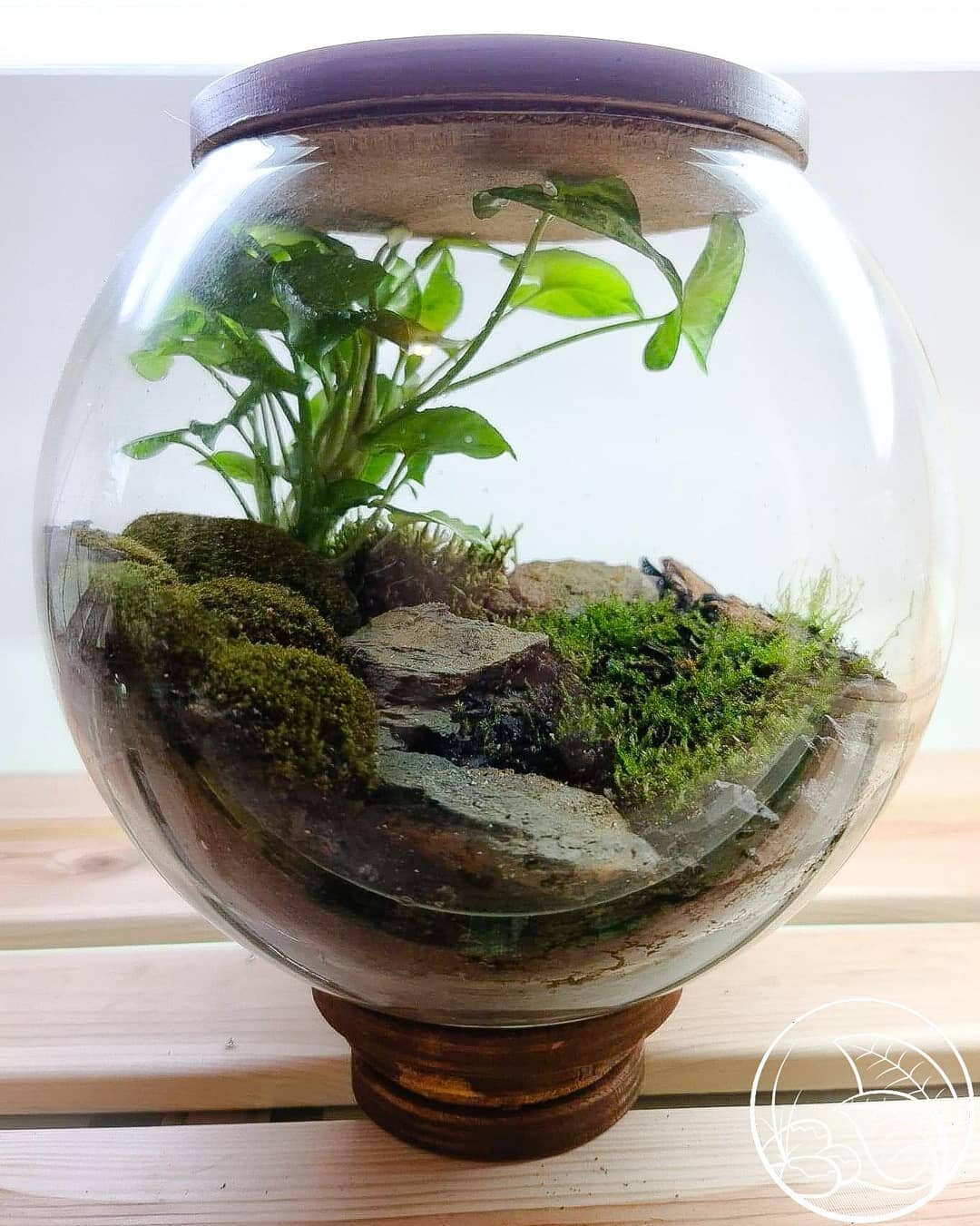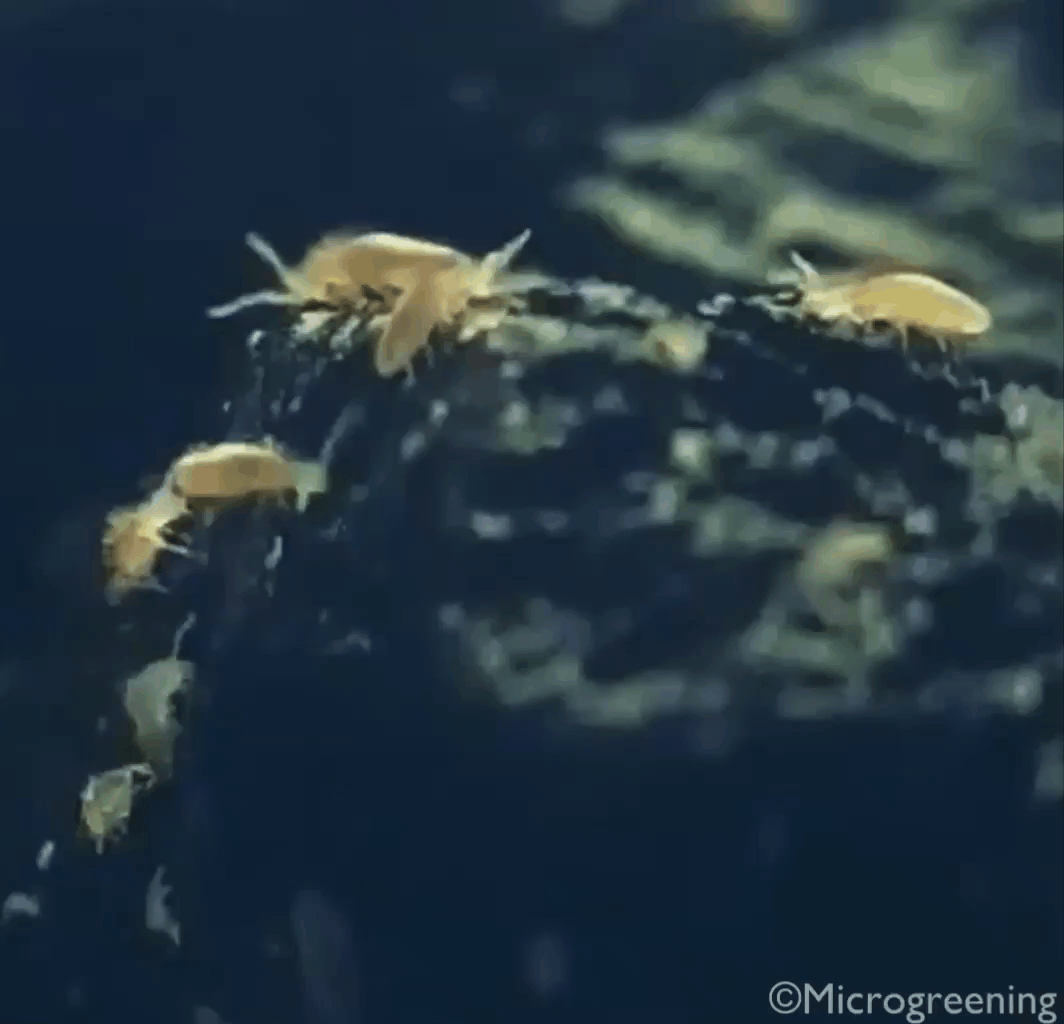How to Avoid a Moulding Terrarium: What You Need to Know
A fully established terrarium at 1 year of age. This terrarium features 3 types of moss and beneficial springtails.
When it comes to making a miniature ecosystem, one of the most common issues you will face is mould inside your terrarium. The unfortunate reason for this is that moss and humidity loving plants thrive in the same environment as mould. Mould is present in every day life, it has spores that travel unnoticed through the air everyday that can stay dormant for years even when dry so there is no guarantee you can stop its presence in your terrarium. When you spot mould in your terrarium, it was always there, it has just activated its life cycle now that the ideal conditions have been met.
Here in Australia, our climate is quite dry, this allows decomposition to be slowed as there is no trigger for the breaking down of materials. This coupled with a sudden, constant introduction of moisture creates a rapid response.
I would not recommend harvesting any materials from the wild and putting them directly into your terrarium as they are very volatile and unpredictable. They will need to be properly prepared before you begin. Decomposing materials, fungus and insect eggs are among the list of things that can contaminate your terrarium. Although, even if you were to decontaminate your materials appropriately, the material itself may be subjected to breaking down.
All terrariums should be closely monitored and managed until they have been established. After the point of establishment, there is a much lower risk of moulding and you are able to relax and enjoy your creation.
Clean Your Materials:
Decomposing wood in a bug enclosure. A nice snack for some!… But not a good look in a display.
All natural materials have to decompose so before we put any natural materials inside of a closed container, we need to make sure they are properly taken care of and are as clean as possible. This is especially important regarding moss as its density makes it a perfect hiding spot for contaminants.
The easiest way to clean moss is to submerge it in distilled or rain water while removing any debris. Because moss is easily positioned and gets good contact with the substrate when it is wet, this is good practice right before applying it to your terrarium.
For other materials like wood and soil, it’s best to cook out the contaminants. Materials like wood can be boiled and submerged for a small amount of time (about 5 to 10 minutes) to eliminate bacteria and other unwanted life hidden inside. After boiling, ensure it’s cooled down before applying it to your terrarium.
If you’re extra careful, soil can also be sterilized and works best being cooked in an oven or by microwave. Sterilizing soil will not only eliminate pests in the soil, it will also stop weeds waiting to sprout in your terrarium.
No chemicals should ever be used when cleaning anything in a terrarium, especially when moss is involved as their leaves are highly absorbent. Most chemicals will either damage or discolour moss, even the chlorine in tap water.
Objects like animal bones should be used with caution and you will need to keep a close eye on these as they may be too reactive for your terrarium.
Springtails are a natural cleaner of mould.
Clean Up Crew:
Springtails are excellent insects to keep mould under control as they eat the decomposing matter before the mould is able to get to the final stage of its life cycle and spread its spores. Springtails will allow your terrarium to have more volatile materials with less manual intervention at the start of a terrariums life.
Read a full write up about springtails here.
Temperature and Sunlight:
Where plants take in carbon dioxide and release oxygen, mould does the exact opposite taking in oxygen and releasing carbon dioxide. Carbon dioxide makes the atmosphere warmer due to carbon dioxides ability to trap heat. This means mould can create a spiral where it benefits from its own increasing of the temperature. Your terrariums plants will over time be able to regulate oxygen levels but the initial part of breaking down at the start of a terrariums life may cause an imbalance.
Everything in a terrarium should love humidity, this is a problem because mould also thrives in humid environments, but between plants and mould we can still control the temperature. Plants and especially terrarium mosses are susceptible to overheating in terrariums whereas mould enjoys a nice warm environment. We can fix this by finding a cooler location away from heat producing objects around the home (e.g. computer towers, heaters, gaming consoles etc). Temperature is the reason why here in Australia, I would suggest keeping a closer eye on your newly built terrariums on the very warm days.
Most terrarium mosses can only handle short periods of time in direct sunlight. Sunlight requirements for most terrarium plants are usually lower light conditions because are naturally from tropical locations. This suggests the optimal location for a terrarium is away from direct sunlight. Keep in mind that in nature, UV rays from the sun will kill mould.
The most optimal terrarium location may not be possible. The perfect amount of light & temperature is not the only way to have a terrarium. Artificial light works very well for terrariums and under a proper set up, a terrarium can really be placed anywhere. The most important thing is to understand that there are many levels of protection you can achieve and the more processes you are aware of, the higher your rate of a successful terrarium will be.
Room to Breathe:
An important factor to consider is the amount of overhead space your plants have in the terrarium. having a lot of space above will allow water to collect further away from your moss and other plants, keeping your plants humid but not soggy. It also just makes sure your plants have room to grow and spread out their leaves as much as possible to soak light. An overcrowded terrarium may cause plants overshadow other plants and cause parts to die off from competition for light, causing more objects in your terrarium to start decomposing. The main thing we are trying to do is make sure everything is as alive as possible as decomposition is unavoidable with dead plants.
We explained in the last segment regarding mould releasing releasing carbon dioxide, a large amount of space in a terrarium will allow carbon dioxide to collect in the atmosphere and not overwhelm any of your beneficial insects. After reaching a certain threshold of carbon dioxide in the air, depending on what insect you have, they may lose their ability to function and die. If you suspect that there is too much mould happening at once, you may need to pop the top for a moment to allow extra oxygen to move back into the container. After your terrarium has stabilised and mould does not introduce itself as often, there isn’t much need to open the terrarium for oxygen because the plants will provide it.
Good Watering Practice:
The right amount of moisture in a terrarium can do a world of difference especially in the beginning of your terrariums life.
Read a full write up about watering your terrarium here.




